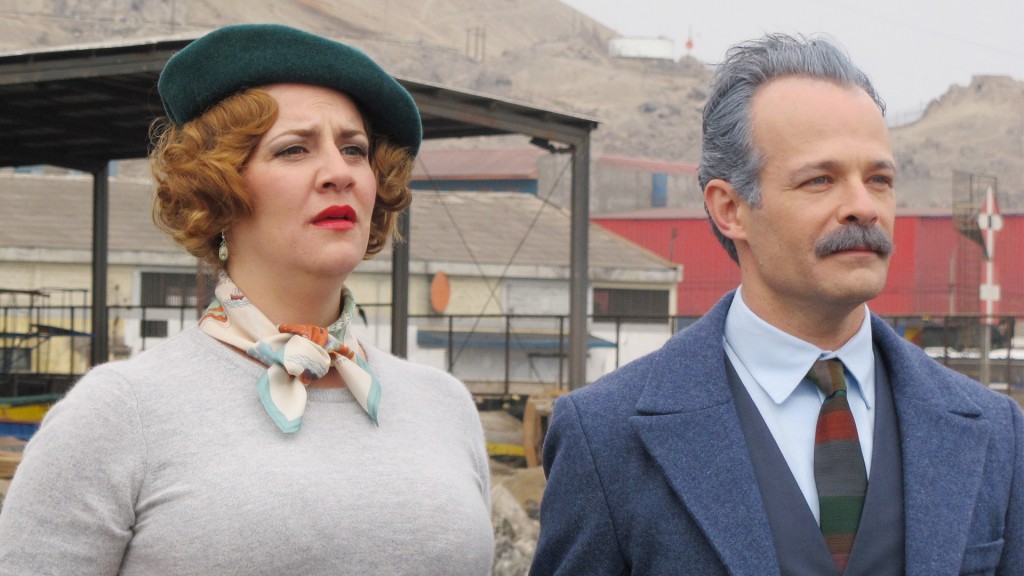La Danza de la Realidad Review
 Jodorowsky returns with his first feature film in over twenty years – his last being the rather disappointing and atypical The Rainbow Thief – the bewitching La Danza de la Realidad (The Dance of Reality). An adaptation of his autobiographical book of the same name La Danza de la Realidad is obviously a deeply personal work but it is not a film that it is anywhere near as difficult to connect to as something like The Holy Mountain, a dazzlingly beautiful but near impenetrable riddle of a film.
Jodorowsky returns with his first feature film in over twenty years – his last being the rather disappointing and atypical The Rainbow Thief – the bewitching La Danza de la Realidad (The Dance of Reality). An adaptation of his autobiographical book of the same name La Danza de la Realidad is obviously a deeply personal work but it is not a film that it is anywhere near as difficult to connect to as something like The Holy Mountain, a dazzlingly beautiful but near impenetrable riddle of a film.
Jodorowsky has lost none of his wit or imagination since making films such as The Holy Mountain, El Topo or Santa Sangre and despite La Danza de la Realidad being a far easier film to understand and appreciate immediately than his previous works it is still far, far, far from a straightforward film.
Beginning with Jodorowsky appearing on screen and delivering an introductory monologue about money and life the film moves quickly into a circus sequence that introduces us to the young Alejandro Jodorowsky, played by Jeremias Herskovits, and his father, played with incredible intensity by Brontis Jodorowsky.
We are then slowly shown the town of Tocopilla, a town Jodorowsky lived in for ten years as a child, but the town and all of its inhabitants are heightened & imagined versions of reality. We are seeing the world and this story through the prism of a child’s view, the exaggerated influence of memory and the imaginative embellishment of Jodorowsky’s (the director) creative mind. Everything at first may seem strange or even ridiculous, his mother for instance has an almost laughably voluptuous bosom that spills out of her dress and she sings every line in an operatic style, but these seeming flights of fancy make a great deal of sense within the context of the film. The symbolic potency of his mother’s breasts, the very things that physically nurtured a young Jodorowsky, quickly becomes clear and the exaggerated style with which she delivers her lines speak to the way in which Jodorowsky remembers his mother, more than what she was actually like. They represent an impression, a memory, a feeling, rather than a literal manifestation.
The story we see unfold in Tocopilla is predominantly told from the perspective of the young Alejandro but approximately a third of the way through the focus shifts more in favour of the father, as we follow his journey beyond Tocopilla. It is a very interesting structural choice, particularly as the father is an incredibly unsympathetic character at first, but the way in which we see the father’s partial redemption adds emotional weight to many of the later scenes.
These later sequences, which involve the father attempting to assassinate the country’s dictator and the father’s subsequent partial paralysis, are also more serious than some of what has gone before. Many of the early scenes in Tocopillia are often amusing, if only because it is hard not to find some of the more exaggerated symbolism a little on the hysterical side, but they are nonetheless still heartfelt and highly effective.
Jodorowsky reportedly made the film entirely in secret, no doubt helped by the fact that the cast and crew mostly have the surname Jodorowsky, and it is clear that there was not quite as much money available for CGI and set decoration as he needed to fully realise his vision, but these rough edges rarely detract. Jodorowsky has crafted a beautiful bricolage which is both easy to digest and engage with and also unlike anything you have seen before. An absolute marvel.